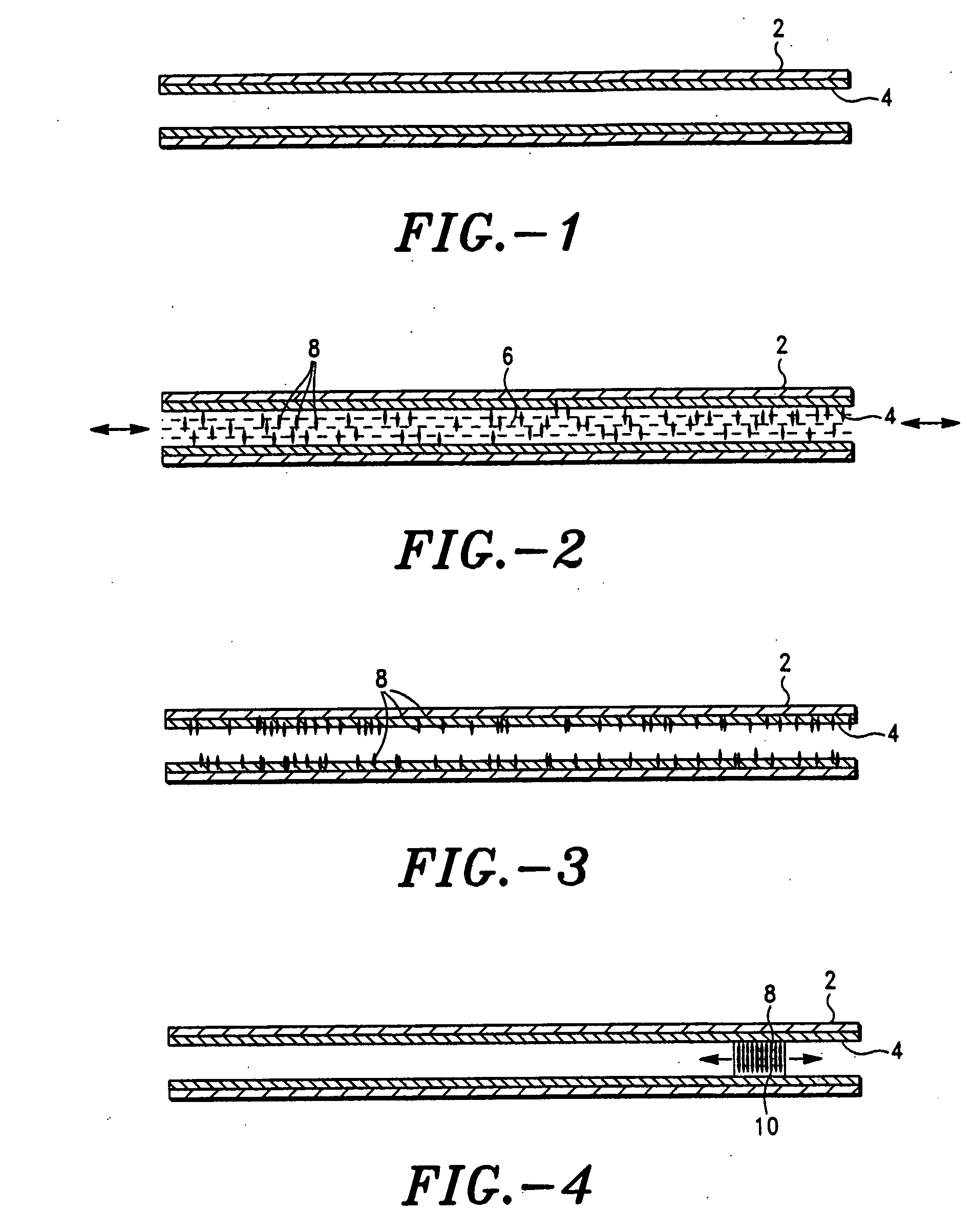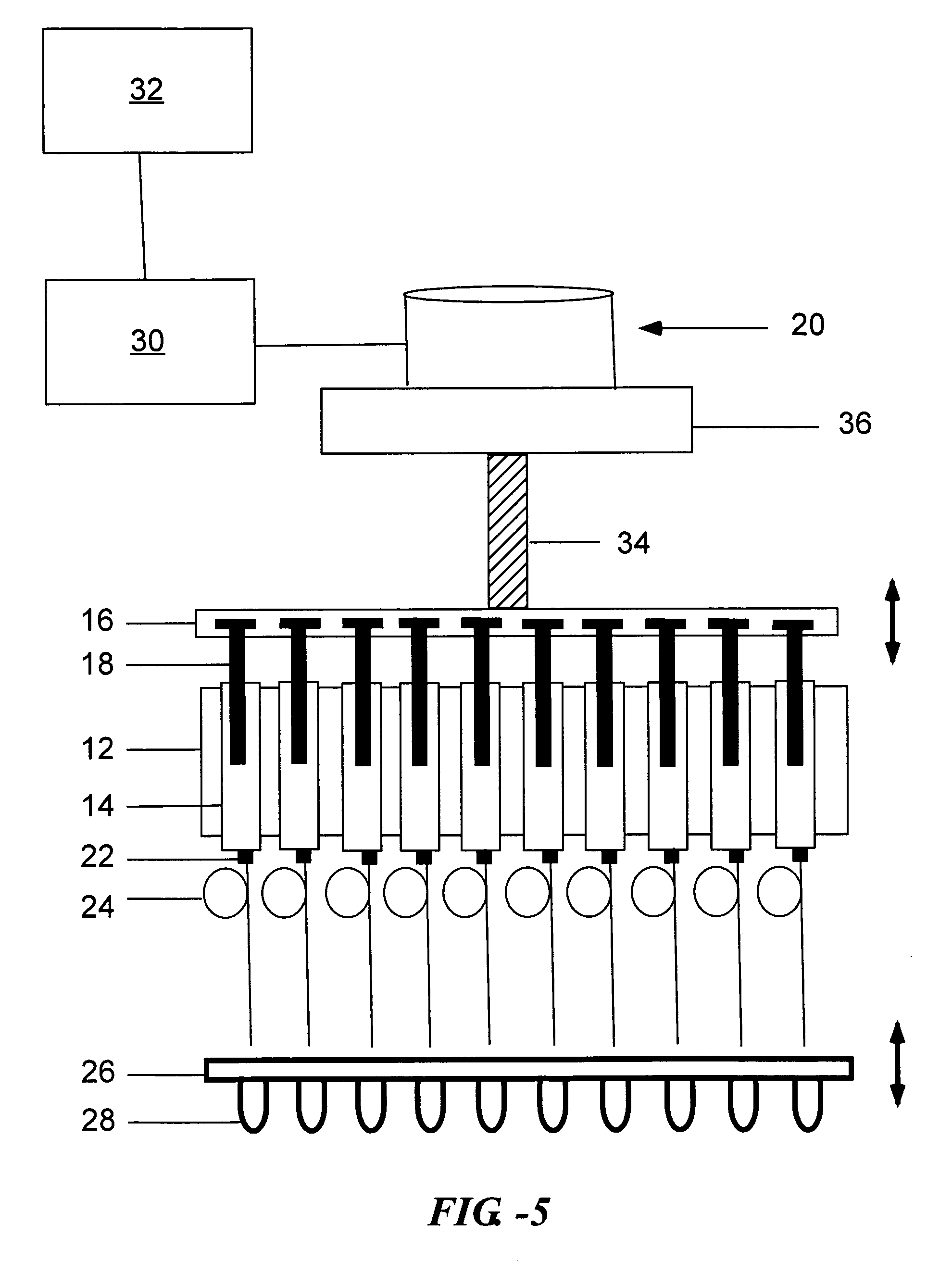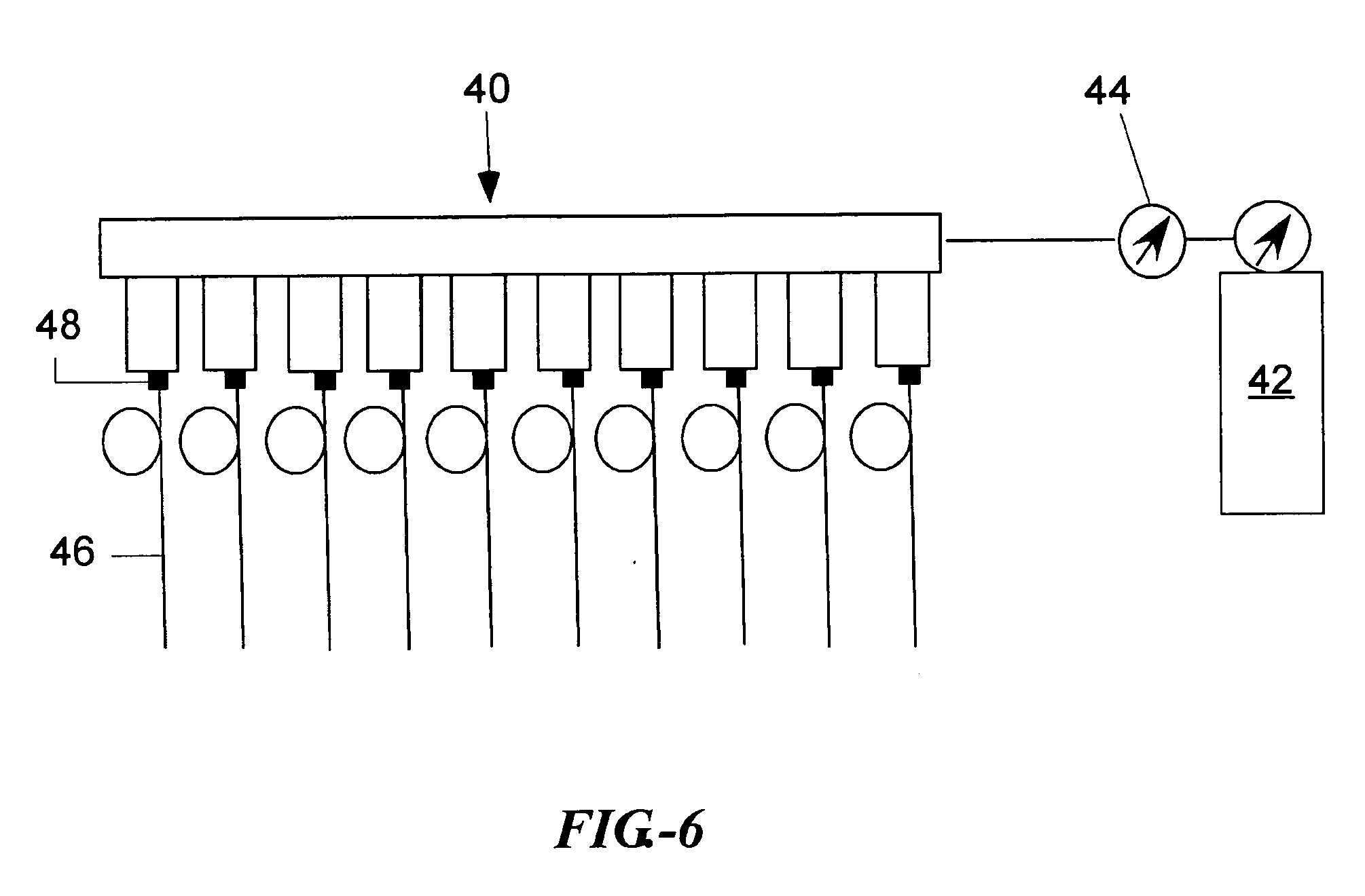Open channel solid phase extraction systems and methods
a technology of solid phase extraction and open channel, which is applied in the direction of biomass after-treatment, chemical/physical processes, peptides, etc., can solve the problems of partial or even substantial dehydration or desolvation of the extraction surface and/or analyte, and achieves greater extraction efficiency, high enrichment factors, and large original sample volume
- Summary
- Abstract
- Description
- Claims
- Application Information
AI Technical Summary
Benefits of technology
Problems solved by technology
Method used
Image
Examples
example 1
Hydroxide Etch-Conditioning of Fused Silica Capillary Tubing
[0257] Fused silica capillaries (204 um ID, 362 um OD; 50 meters×2; obtained from Polymicro Inc. (Phoenix, Ariz., lot #PBW04A) were etched by treatment of the channel surface with 100 mM NaOH for 50 minutes. The capillaries were then washed with water (6.0 mL), 0.1N HCl (2 mL), water (10 mL) and acetonitrile (6 mL), after which they were dried with nitrogen gas.
example 2
Synthesis of Amino-Functionalized Capillary
[0258] A 10 meter section of the etched capillary described in Example 1 was filled with a solution of (MeO)3Si(CH2)3NH2 (400 uL) in toluene (1200 uL). The capillary was placed in a 120° C. oil-bath and the reaction continued for 16 h with the flow of the silanization solution through the capillary adjusted to 0.8 uL / min. The capillary was then washed with toluene (1000 uL), acetonitrile (2000 uL), and dried with nitrogen.
example 3
Synthesis of Carboxylic Acid-Functionalized Capillary
[0259] A four meter length of the amino-functionalized capillary described in Example 2 was filled with a solution of succinic anhydride (125 mg; 1.25 mmol), DMAP (20 mg), pyridine (25 uL) in DMF (400 uL) and acetonitrile (900 uL). The capillary was placed in a 65 C oven and the reaction continued for 15 h with the flow of the succinic anhydride solution adjusted to 0.6 uL / min. The capillary was then washed with acetonitrile (2000 uL).
PUM
| Property | Measurement | Unit |
|---|---|---|
| Fraction | aaaaa | aaaaa |
| Fraction | aaaaa | aaaaa |
| Mass | aaaaa | aaaaa |
Abstract
Description
Claims
Application Information
 Login to View More
Login to View More - R&D
- Intellectual Property
- Life Sciences
- Materials
- Tech Scout
- Unparalleled Data Quality
- Higher Quality Content
- 60% Fewer Hallucinations
Browse by: Latest US Patents, China's latest patents, Technical Efficacy Thesaurus, Application Domain, Technology Topic, Popular Technical Reports.
© 2025 PatSnap. All rights reserved.Legal|Privacy policy|Modern Slavery Act Transparency Statement|Sitemap|About US| Contact US: help@patsnap.com



